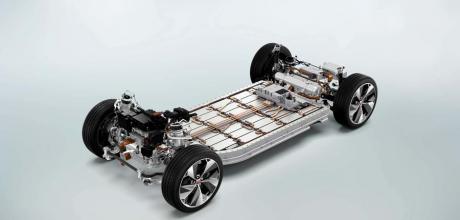The solid-state electric vehicle battery - how it works
Current lithium-ion (Li-ion) electric vehicle battery technology and production is continually being refined, and has progressively reduced battery costs over recent years, but rising raw material costs now threaten that progress. Projections of data showing falling Li-ion battery costs over a decade are being made when there's no certainty of past performance being replicated. With potential for further cost reductions limited, it seems that prospects for cheaper EV batteries, and thus cheaper EVs, hinge on a significant breakthrough in solid-state Li-ion batteries. What distinguishes these batteries from existing Li-ion technology, and when are we likely to enjoy their claimed benefits?
Fundamentally, the chemistry of solid-state battery cells is much the same as the Li-ion cells used at present. Anode materials are generally comprised of carbon, lithium titanate, lithium-alloys, and metallic lithium; with cathodes using lithium-based oxides, lithium phosphates (LFP), and vanadium oxide. The key differences in the solid-state batteries are the solid-state electrolytes (SSE) used. Replacing the flammable liquid or gel electrolytes offers reduced battery cost, better efficiency, and reduced physical size for a given capacity. SSEs work safely, and effectively, and over much wider temperature ranges, when existing electrolytes lose efficiency, or fail due to freezing. SSE batteries are also easier to control temperature wise. So hopes for significantly cheaper and more efficient EV batteries seem to hang on the technological refinement of the concept of this solid-state chemistry.
What exactly is involved, and what is needed to get these significantly cheaper EV batteries we so desperately need? Around the globe, researchers and development teams are working with desperation to solve the problems. Which researchers and manufacturers, if any, are closing in on the elusive pot of gold at the end of the rainbow, and what sort of areas are they working on? Well Tesla, surprisingly, is said not to be working actively on SSBs, but may have close connections with companies who are. Toyota owns over 1,000 patents on SSB technology, but is keeping very quiet about its future plans.
One fundamental area of research we do know of concerns the type of solid electrolyte used, the choices being between ceramic materials and solid polymers, each with their own benefits and shortcomings. Researchers are looking for electrolytes with high conductivity, allowing faster charge and discharge rates, and one area of development concerns the solid-state interfaces – where the electrolyte and electrodes make contact, and many critical issues arise. Another critical issue arises with lithium metal anodes, where thin, needle-like structures, called dendrites, form on the anode surfaces. These can then grow, like tree roots, into the solid-state electrolytes, reducing their efficiency, and eventually pierce right through the electrolyte that separates the anode and the cathode, creating a short circuit, with disastrous results. A Harvard University team has designed a multi-layered solidstate electrolyte battery employing sandwiches of electrolyte materials of varying stabilities, between the anode and cathode. This multi-layer approach prevents the dangerous penetration of the lithium dendrites, not by eliminating it, but by containing it to neutralise their negative effects. In a totally different approach, South Korea's Samsung released research data on a solid-state battery that somewhat shunned conventional Li-ion chemistry, by using a silver/ carbon composite coating on conventional lithium metal anodes. The 500-mile range battery they produced could be charged and discharged over a thousand times, making for a half million mile predicted life, or twenty years and more, even for high mileage owners. It's a totally different direction from the Harvard work and, like many other instances, we just don't know much of what is going on, as the technical details are almost priceless, and probably being way beyond our understanding anyway!
So many research teams are exploring equally novel possibilities and are just as secretive about their failures as their successes. Since the Samsung study was published last year, we've heard very little more from them, and any forecasts for mass production mention dates beyond 2025. So solid state technology in electric vehicle batteries is not really something that we'll be likely to see in next year's EVs, or even any before 2025. That's disappointingly somewhat distant from the optimism often being expressed regarding cheaper and more efficient batteries, and just a little bit worrying...


